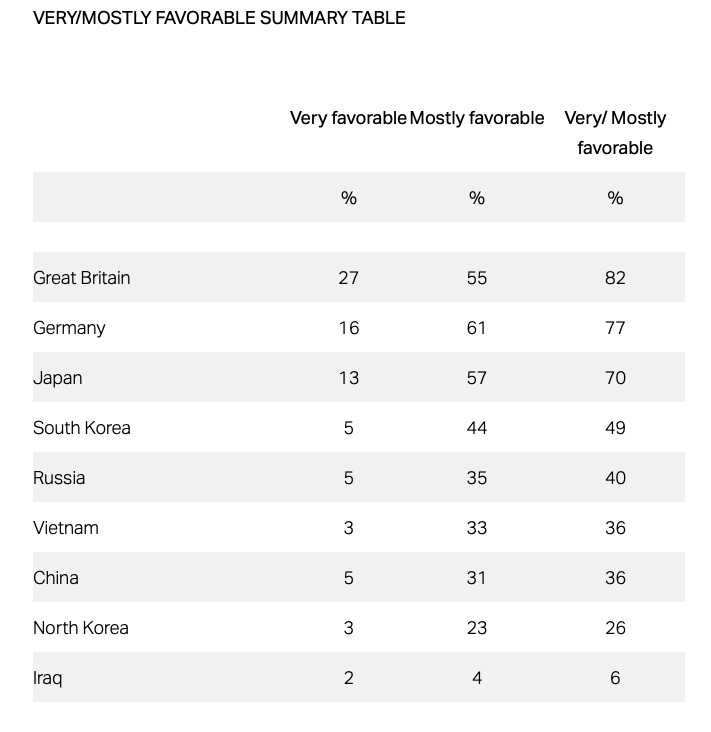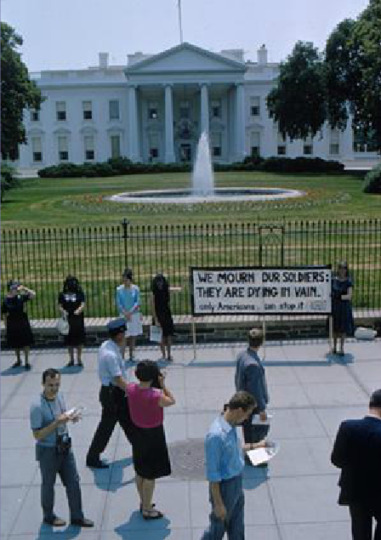Americans & the Vietnam War
The Vietnam War is a war characterized by a level of controversies unparalled to previous conflicts. Unlike other wars in the past which united most American people by a shared national pride, the public sentiment during the Vietnam War era saw a profound division between hawks, the war supporters, and doves, those who advocated for peace. This distintive sentiment was reflected in numerous public surveys conducted throughout and after the war, offering valuable insights into the evolution of American public opinions on the conflict.
This graph, conducted by the Pew Research Center, traces the trajectory of American public opinion regarding the U.S. government's decision to send troops to Vietnam. The question is whether they made a mistake to engage in the war. As seen in the graph, in the beginning of the war in 1965, a majority of American people believed that the government did not make a mistake sending troops to defend democracy agaisnt the spread of communism. However, this belief shifted over time. By 1973, this number dropped from 60% to 29%, almost half of the initial percentage, suggesting that more Americans realized that the war was a mistake. This signifcant change may be attributed to journalism, especially television coverage of the war that provoked people's sympathy for soldiers and innocent civilians, fostering the rise of antiwar movment.
This second survey is a study conducted by the Gallup on November 13-15, 2000 gauging the American opinions on the Vietnam War after twenty-five years. Although it does not reflect the Americans people's opinions on the war while it was taking place, this survey provides many intriguing insights into the Americans' perspective of the war in its aftermath.
According to the Gallup, the American public still had negative opinions of Vietnam in 2000, with only 36% viewing Vietnam through a favorable lens. This number is significantly lower than other countries that the US was at war with such as Japan (70%) and Germany (77%).
Moreover, the survey reveals that time may have faded the memories of the Vietnam War for people in the current generation. At the time the survey was conducted, 70% of Americans acknowledged that the United States lost that war. 60% correctly stated that the United States backed the South Vietnamese, while twenty percent were incorrect about the U.S. troops supporting North Vietnam.
It is also noteworthy that there was a knowledge gap about the war among young people, the generation growing up with little to no memories of the war. In details, 27% of Americans aged 18-29 said the United States backed the Northern Vietnamese government, 45% said they sided with the South Vietnamese, and 28% had no opinion. Meanwhile, Americans over the age of 30, who likely remembered the war from watching television coverage, were able to answer correctly about the United States providing support for the South Vietnamese government.
This survey indicates three crucial keys. First, the American people still viewed Vietnam in a negative light after twenty-five years, whether due to patriotism during the war or general lack of interest in the country. Second, the younger generations were less likely to know about or remember the war compared to the older ones who grew up watching news coverage of the war. Last but not least is the impact of journalism in shaping the American public understanding. While this survey does not directly mention it, it appears that television coverage of the war was a major reason why the Americans who lived and grew up during the war could still remember it. Therefore, the war journalism did not only bring the news from the front line to the Americans at home but also allowed the war to live in people's memories.
Anti-War Protests in the 1960s-1970s
The late 60s and early 70s in the United States witnessed an enormous wave of anti-war protests, raging from the West to East Coast, with Washington D.C. being a main ground of the movement. Thousands of protesters gather at the Eclipse, National Mall, and the Lafayette Park, the front yard of the White House to show their solidarity. During the Mayday Protest in 1971, the protesters planned to shut down city and handicap the goverment by camping out on the edge of downtown Washington. These joint effort increasingly placed pressure on the President and his administration that they were trying to find a way to get out of the war. Note that most of the big protests took place in the late 60s to early 70s, a time when media began to expose more brutal truths about the war, suggesting the its influences on changing the American public opinions on the ongoing conflict.


